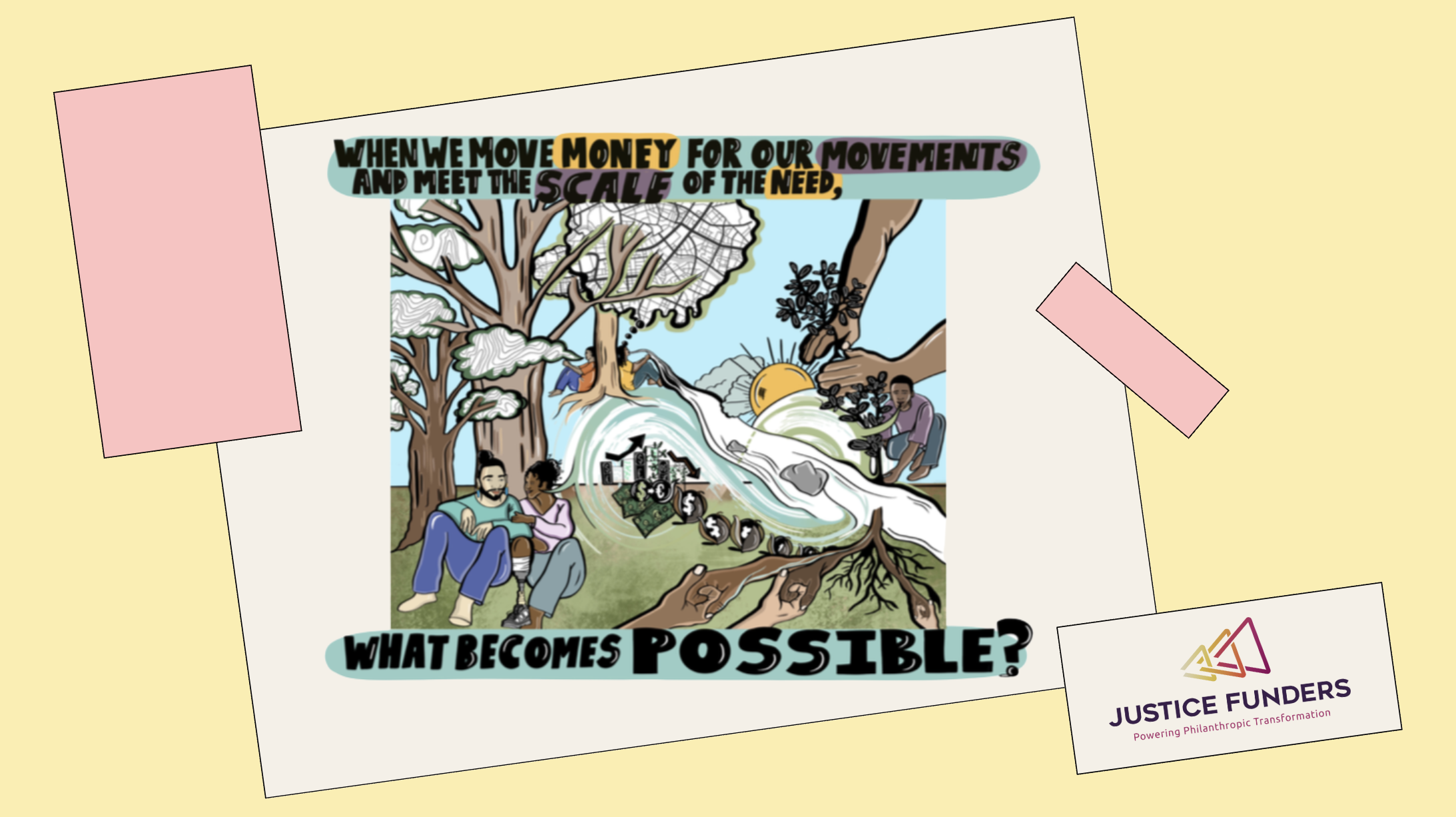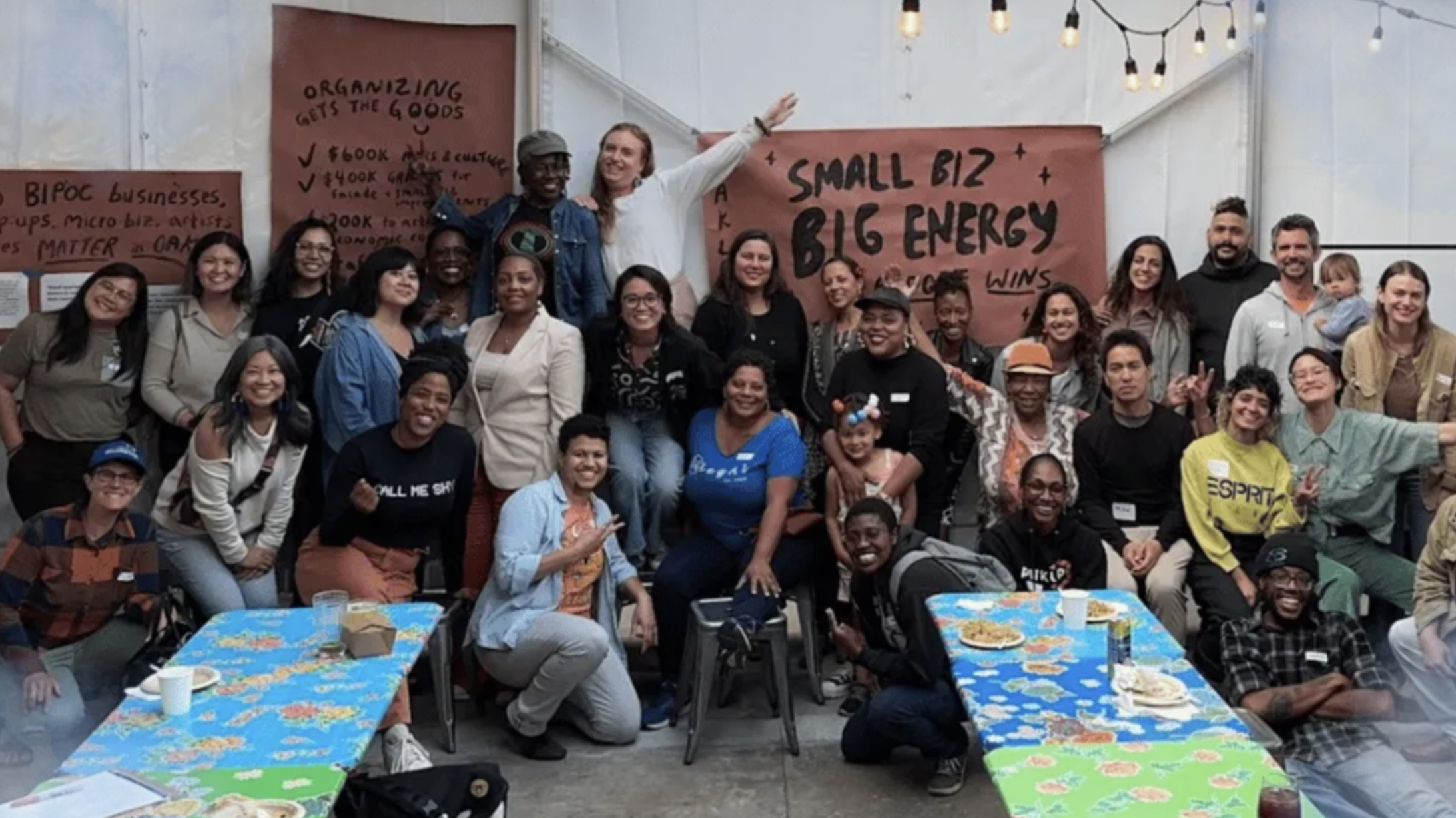Robin Hacke has spent more than 15 years talking to and working alongside community leaders across the country, many of whom share a similar goal of attracting more private capital for important community development projects.
But whether it’s revitalizing the downtown area to support small businesses or constructing more affordable housing to support local residents, Hacke realized that the main issue wasn’t a lack of capital but rather the lack of an investable pipeline of community-controlled projects that reflect community needs and priorities.
“These communities need all kinds of things, but what moves capital and creates change is having investable deals,” said Hacke. “By teaching deal spotters to talk to deal framers, together they could create an infrastructure to allow capital to be absorbed more effectively.”
To unlock the full potential of community investing and get capital flowing to where it was most needed, Hacke wanted to create a toolkit that both investors and community leaders could use to dictate how and where to deploy capital to make a tangible impact on issues like economic opportunity, housing insecurity and healthcare inequality.
Enter the Capital Absorption Framework, which Hacke first developed while working with a funder collaborative called Living Cities that aims to close the racial wealth gap in the U.S.
Recognizing the need for a more functional community investment ecosystem, Hacke incubated the framework for nearly three years at the Kresge Foundation before spinning it out as part of the Center for Community Investment (CCI) in 2017. Today, CCI is a project of Rockefeller Philanthropy Advisors and is supported by the Robert Wood Johnson Foundation, The Kresge Foundation, JPMorgan Chase & Co., Target Foundation, Wells Fargo & Company, and The California Endowment.
Hacke understood that it wasn’t enough to just hand out money to communities – the proverbial “helicopter money” approach – there also needs to be the right infrastructure in place to absorb it. Hence the term “capital absorption,” which emphasizes the importance of having the right leaders at the table and building a sustainable pipeline of deals.
Without this infrastructure, capital runs off and doesn’t get effectively or efficiently deployed because nobody bothered to talk to the users of capital (i.e., community members).
Hacke acknowledges that many current approaches to community investing are privileged towards the needs of investors rather than communities. There needs to be a middle ground that better balances those needs, which can sometimes conflict with each other.
CCI’s new Executive Director Omar Carrillo Tinajero, who first joined CCI in 2017, shares this sentiment around the difficulty of getting entrenched silos – from project development to public policy – to work together and take a systems change view.
“Our perspective is that there are plenty of interesting projects out there,” said Tinajero. “The work now is focused on moving towards ecosystems and pipelines to create an enabling environment to advance more of those projects.”
From one deal to a deal pipeline
Community investing has existed for more than two centuries, but despite some notable successes – the CDFI Fund, Community Reinvestment Act, credit unions – the field continues to face questions about how it can be scaled to address the growing list of community needs.
Hacke and Tinajero hope to change that with the Capital Absorption Framework, which is designed to reframe which deals get priority and how they are structured, ultimately translating community needs into a pipeline of investable deals.
The framework has three core functions that complement and build on each other, thereby strengthening a community’s ability to achieve the desired systemic change.
- Articulating shared priorities. This sounds simple in practice but can be difficult to achieve in practice if community leaders have conflicting perspectives.
- Creating and executing an investable pipeline of deals and projects that advance shared priorities. This approach can lead to more productive and longer-lasting conversations than those focused on single deals, especially since many investors face constraints related to minimum investment sizes that sometimes makes it easier for them to write large checks rather than small ones.
- Strengthening the enabling environment for current and future deals. This usually requires engaging in policy discussions at both the local and national level to advocate for community priorities that will be easier to solve with government support.
A common thread through each of these functions is integrating the perspectives of community members who will be directly affected by the deals and projects being discussed.
“Many people think of community engagement as the first step in the planning process,” said Hacke. “But my colleagues and I have found that communities need to be involved at every step of the process because the trade-offs always come later.”
For example, when the Coachella Valley tried to create more affordable housing with a CDFI-funded mobile park, they pressed for more community control of the credit enhancement terms to allow for negotiation on what it would take to get to a ‘yes,’ allowing them to save dozens of potential deals that would have otherwise ended with a straight ‘no’.
The Capital Absorption Framework also comes with a library of open-source resources, including how-to guides, explainer videos, case studies and focus areas that the CCI team sees as critical to “center[ing] racial equity.”
“The Framework is meant to be applied to any community concern where investment is part of what is needed to make progress,” said Hacke. “We have seen it applied to affordable housing, inclusive economic development, health equity, climate resilience, community ownership, commercial corridor development, and equitable transit-oriented development.”
Community investment is not a math problem
Many communities have enthusiastically leveraged the framework to advance social and environmental priorities.
Take HouseATL’s work on affordable housing, which included creating the Funders’ Collective and bringing together a broad coalition of 120 funders – including government agencies, foundations, banks, CDFIs, and social impact investors – to streamline capital raising and more efficiently coordinate resources for affordable housing. To date, this initiative has mobilized $2 billion in public and private capital and led to the construction of nearly 12,000 homes across the Atlanta area.
Or consider Invest Appalachia, a place-based initiative to reimagine main street development and boost clean energy. In 2024 alone, Invest Appalachia raised more than $9 million across 27 projects, 79% of which were defined as “but-for” deals that wouldn’t have happened without the organization providing flexible or risk-absorbing capital.
In both cases, community leaders in these regions used the Capital Absorption Framework to align on their priorities, engage community members for feedback, and build a pipeline of deals that would be attractive to private investors.
Both Hacke and Tinajero said CCI is always happy to talk to community leaders and provide guidance on how to implement the framework, but communities are also free to use the framework without CCI’s involvement or knowledge. Many of the 120+ alumni of CCI’s leadership program go on to do exciting work in their local communities, forming a small but growing network of experts in the framework, many of whom are willing to share lessons learned based on their experience.
One lesson is the power of reframing the problem. It’s hard enough for many community leaders to strike one deal focused on a specific problem. But by enlarging the problem to make it a shared problem – and by expanding from one deal to a pipeline of deals – communities can rally more support for their shared priorities. The theory is that more people will care and want to get involved if they see it as a systemic issue with multiple levers of change.
“Most people approach investing as a ‘math problem’ rather than a system issue,” said Hacke. “But community investment is ultimately about empowering communities for system change, so it’s important for investors to consider who’s out there solving problems and who needs more capital to solve these problems. Investors can’t just parachute in and do it for them.”
This system lens can also be applied across sectors or geographies, helping to foster a network of leaders with similar interests or challenges.
Tinajero explained his vision for CCI as cultivating and nurturing a vibrant forest, ensuring there are both strong roots (i.e., by supporting leaders, hosting initiatives, creating programs) and a stable canopy (i.e., by providing a network for cross-fertilization of ideas).
Unfortunately, this forest is now facing what may be its biggest challenge yet.
You can’t fight a flood with a sponge
Community investing is at a critical inflection point as on-the-ground organizations cope with dramatic and unpredictable rollbacks in state and federal funding. One frequent target of the current Administration is the CDFI Fund, which supports the hundreds of CDFIs that serve economically disadvantaged communities across the country.
The Treasury Department recently announced it will be abolishing the CDFI Fund and all its staff, and may go further by trying to claw back some funding that’s already been allocated. This controversial move, in addition to other potential disruptions in funding – like the EPA’s recent suspension of $16 billion in green energy grants from the Greenhouse Gas Reduction Fund that was created as part of the Inflation Reduction Act – has many community leaders in emergency mode.
“The folks operating in red states are extremely resourceful in working around the government rather than through it, so they are better positioned for the current environment,” said Hacke. “The people in shock are those working in blue states. They may still have resources at the state-level, but they can no longer rely on federal resources.”
Hacke takes some solace from the fact that community investment advocates are scrappy by nature, so they will figure out how to make progress at whatever scale is feasible. There is always capital available – it’s just a question of who gets it and under what terms. In some cases, community leaders may need to adapt deal terms to political realities – for instance, by changing the pitch to investors to make it less politically charged.
But the work must go on. For Hacke, Tinajero and other long-time community investing advocates, building the right infrastructure takes precedence over worrying about any individual deal.
Borrowing a quote from Abigail Bengson of the musical duo, The Bengsons, Hacke says that: “We need to plant the seeds for what’s coming next. The future is the garden of the past.”
Adds Tinajero: “We continue to support leaders and communities to help identify which pivots they need to make given the rollback in Federal assistance and funding for community development. Even though the context continues to shift drastically in each community, our role is to meet the moment with realism and not lose sight of what we’re ultimately working towards – creating communities that allow everyone to thrive.”
Hacke is doing her part as a caretaker for the community investing ecosystem by working on a book about capital absorption that she describes as a practitioner’s guide to achieving community aspirations using the Capital Absorption Framework.
CCI is also planting some seeds of its own. This includes the recent launch of the Sustainable Communities Investment Accelerator (SCIA), an initiative that will “support local teams working to advance resilience, energy independence, and equitable investments in their communities.” The Accelerator will start with a focus on Atlanta, Los Angeles and Minneapolis, with each city receiving grant funding as well as technical assistance, strategic coaching, and access to a peer-learning cohort.
The investors in these communities have their own role to play in nurturing this garden or forest, depending on your metaphor of choice. For instance, investors could do a better job of tailoring their questions based on the intended audience, especially when it’s people without sophisticated financial knowledge, starting by substituting the typical financial jargon with commonsense language.
The future of community investing is in the hands of community leaders across the country and organizations like CCI. For Tinajero: “It’s really motivating and inspiring to see the commitment that people have to their neighbors and peers, and their willingness to protect and support each other in navigating difficult moments.”

%20(1280%20x%20720%20px)%20(46).png)








.webp)
%20(1280%20x%20720%20px)%20(3).webp)


%20(1280%20x%20720%20px)%20(39).png)
%20(1280%20x%20720%20px).webp)

%20(1280%20x%20720%20px)%20(2).webp)



%20(1280%20x%20720%20px)%20(40).png)


.webp)
.webp)

